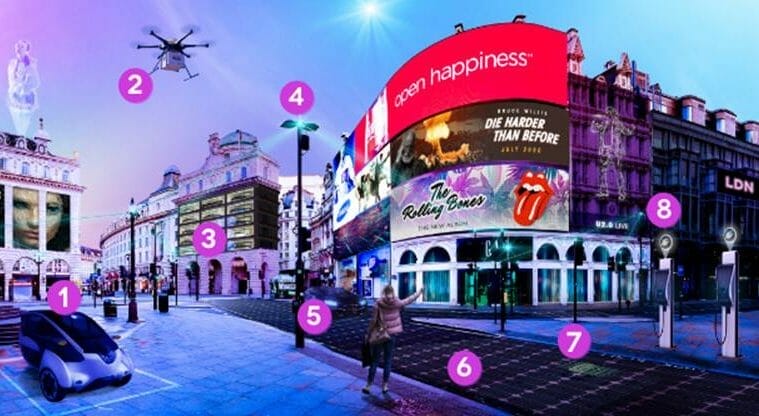
Technology insights about how our roads may look by 2050
Last Kilometre Stations (Electric-Powered Microvehicles)
Companies are creating new modes of transportation to get commuters from mass-transit stations to their final destinations. Electric-powered microvehicles will be kept at what will be known as “last-kilometre stations” and will protect users from the elements and will not require a driving license to operate.
Delivery Drones
Large delivery companies such as Amazon and UPS are already working on delivering packages via drones. These packages will not only contain the usual toys and electronic products but also vaccines and other medical supplies. This will dramatically reduce the number of lorries and trucks on the road.
Autonomous Vehicle Parking Lots
Autonomous vehicles (private or shared) will drop off their passengers at their destination and then park themselves in a dedicated AV car park, leaving original large parking structures open for reuse. These vehicles can then be summoned when the rider is ready to be picked up.
Sensors EVERYWHERE
In the future, there will be sensors in pretty much everything, pretty much everywhere. They’ll be embedded in vehicles, buildings, traffic lights and even the roads, which will provide real-time traffic flow and usage patterns, preventing accidents. They’ll be so many that analysts predict by 2020 there’ll be over 21 billion things connected by sensors.
On-Demand Public Transport
Thanks to connected devices and Big Data, transportation will go from fixed routes and timed schedules, to one where the number of trains, buses, ferries etc available will depend on user demand, which could improve operational efficiency and reduce waiting times and crowding at peak times.
Solar Panel Roads
Companies are testing solar panel roads that will generate energy for power grids or to charge electric vehicles. These roads will allow the car to charge while on these roads. They will also likely power road-side signs, speed cameras and streetlights. Further reports state that some experts have theorised that if roads were converted from tarmac to solar panels, there could be enough sunlight absorbed to power entire cities. Panels have also been predicted to come fitted with LED lights that will illuminate road and warning signs directly into the road itself.
Self-Repairing Roads
Researchers at Cambridge, Bath and Cardiff Universities are working on creating material that is “self-healing”. This material can be applied to roads, making potholes and cracks a thing of the past. According to recent research, roads today have a 20-40-year lifespan but with this new technology, this could be doubled to 80 years.
Electric Charging Stations
Electric vehicle use could reduce carbon pollution by 550 million metric tons per year by 2050, which is the equivalent to the emissions from 100 million of today’s passenger cars says a study from the US-based Natural Resource Defense Council and the Electric Power Research Institute. As a result, there’ll be far more widespread electric charging points.
More information about Irish Tech News and the Business Showcase, see more articles here.
FYI the ROI for you is => Irish Tech News now gets over 1.5 million monthly views, and up to 900k monthly unique visitors, from over 160 countries. We have over 860,000 relevant followers on Twitter on our various accounts & were recently described as Ireland’s leading online tech news site and Ireland’s answer to TechCrunch, so we can offer you a good audience!
Since introducing desktop notifications a short time ago, which notify readers directly in their browser of new articles being published, over 16000 people have now signed up to receive them ensuring they are instantly kept up to date on all our latest content. Desktop notifications offer a unique method of serving content directly to verified readers and bypass the issue of content getting lost in people’s crowded news feeds.
Drop us a line if you want to be featured, guest post, suggest a possible interview, or just let us know what you would like to see more of in our future articles. We’re always open to new and interesting suggestions for informative and different articles. Contact us, by email, twitter or whatever social media works for you and hopefully we can share your story too and reach our global audience.
[“source=irishtechnews”]







